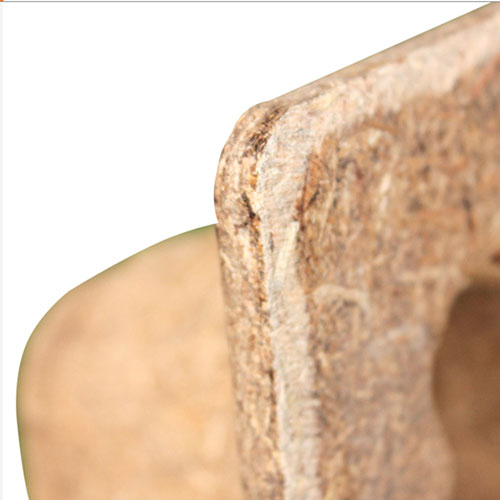The process principle of Compressed Wood Pallet
2023-12-07
The production process of compressed wood pallets, also known as pressed wood pallets or molded wood pallets, involves compressing wood fibers with adhesives under high pressure and temperature to create sturdy, uniform pallets. The process typically includes the following steps:
1. Raw Material Preparation: The process begins with preparing raw materials, which primarily consist of wood fibers derived from wood chips, sawdust, or wood waste. These materials are cleaned, dried, and processed to ensure consistency in particle size and moisture content.
2. Mixing and Blending: The prepared wood fibers are mixed with a binding agent, usually a resin or adhesive, to facilitate binding during the compression process. The mixture is carefully blended to ensure even distribution of the adhesive throughout the wood fiber matrix.
3. Molding and Compression: The blended wood fiber and adhesive mixture is placed into a mold or formed into the desired pallet shape using a hydraulic press or compression molding machine. The mold is designed to the specific dimensions of the pallet being produced.
4. High Pressure and Heat Treatment: Once the wood fiber mixture is loaded into the mold, high pressure and heat are applied using the compression machine. The combination of pressure and heat activates the adhesive, causing it to bond the wood fibers together and form a solid, dense structure.

5. Curing or Cooling: After the application of pressure and heat, the molded pallets may undergo a curing process or be cooled down to allow the adhesive to set and cure. This stage ensures the strength and stability of the pallets' structure.
6. Finishing and Quality Checks: The pallets are trimmed, cut, or finished to achieve the desired dimensions and smooth edges. Quality checks are performed to inspect for any defects, ensuring that the pallets meet the required specifications and standards.
7. Pallet Stamping and Marking: Some pallets undergo stamping or marking processes to add identification marks, logos, or compliance with industry standards, such as ISPM 15 (International Standards for Phytosanitary Measures) for international shipping.
8. Packaging and Storage: Once the pallets pass quality checks, they are packaged and stored for distribution and use. Packaging may involve stacking or bundling the pallets for shipment to customers or storage in warehouses.
The entire process of manufacturing compressed wood pallets is carefully controlled to produce pallets that are durable, uniform in size, consistent in quality, and suitable for various industrial applications, including logistics, transportation, and storage. The use of recycled wood fibers and the environmental benefits of this manufacturing process contribute to the popularity of these pallets in sustainable supply chain management.


